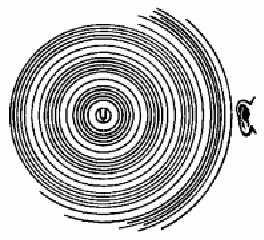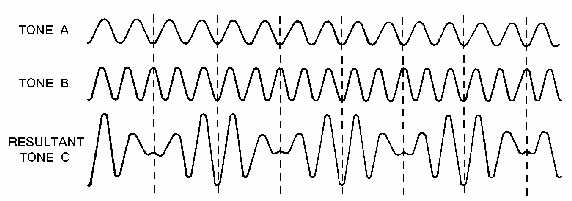1-21
Figure 1-14.—Sound waves spread in all directions.
Sound intensity and loudness are often mistakenly interpreted as having the same meaning. Although
they are related, they are not the same. Sound INTENSITY is a measure of the sound energy of a wave.
LOUDNESS, on the other hand, is the sensation the intensity (and sometimes frequency) the sound wave
produces on the ear. Increasing the intensity causes an increase in loudness but not in a direct proportion.
For instance, doubling the loudness of a sound requires about a tenfold increase in the intensity of the
sound.
Sound Quality
Most sounds, including musical notes, are not pure tones. They are a mixture of different frequencies
(tones). A tuning fork, when struck, produces a pure tone of a specific frequency. This pure tone is
produced by regular vibrations of the source (tines of the tuning fork). On the other hand, scraping your
fingernails across a blackboard only creates noise, because the vibrations are irregular. Each individual
pipe of a pipe organ is similar to a tuning fork, and each pipe produces a tone of a specific frequency. But
sounding two or more pipes at the same time produces a complex waveform. A tone that closely imitates
any of the vowel sounds can be produced by selecting the proper pipes and sounding them at the same
time. Figure 1-15 illustrates the combining of two pure tones to make a COMPLEX WAVE.
Figure 1-15.—Combination of tones.
The QUALITY of a sound depends on the complexity of its sound waves, such as the waves shown
in tone C of figure 1-15. Almost all sounds (musical and vocal included) have complicated (complex)




